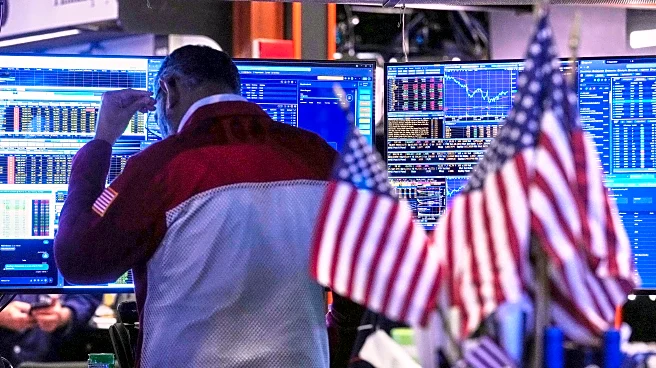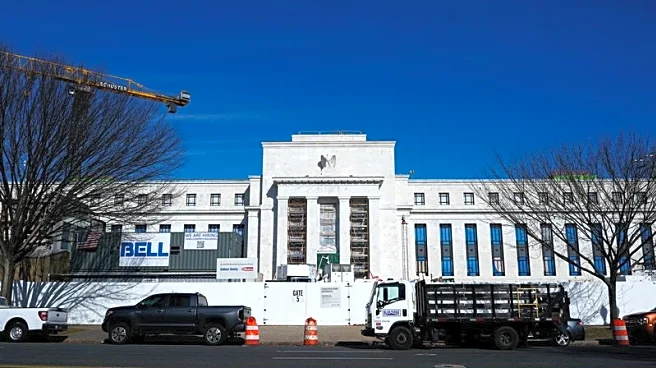What's Happening?
The Federal Reserve is set to meet on December 9-10 to discuss potential changes to the federal funds rate. Recent developments have led to differing opinions among major financial institutions regarding
the likelihood of a rate cut. Morgan Stanley has revised its forecast, no longer expecting a rate cut in December due to stronger-than-expected nonfarm payrolls data from September. The firm now anticipates rate cuts in January, April, and June 2026, aiming for a target range of 3.00%-3.25%. Conversely, Goldman Sachs maintains that a 25 basis point reduction in December is still possible, citing the rising unemployment rate and inflation nearing the Fed's target. Wells Fargo also sees a potential rate cut in December but acknowledges it as a 'close call' due to recent resistance from Fed officials.
Why It's Important?
The Federal Reserve's decision on interest rates is crucial for the U.S. economy, affecting borrowing costs, consumer spending, and business investment. A rate cut could stimulate economic activity by making loans cheaper, potentially boosting growth. However, it also reflects concerns about economic slowdown, particularly in the labor market. The differing views among major financial institutions highlight the uncertainty surrounding the economic outlook. Morgan Stanley's shift suggests confidence in economic resilience, while Goldman Sachs and Wells Fargo's positions indicate caution due to labor market softness. The decision will have significant implications for financial markets, influencing stock prices, bond yields, and currency values.
What's Next?
The upcoming Federal Reserve meeting will be closely watched by investors and policymakers. If the Fed decides to cut rates, it could signal a proactive approach to supporting the economy amid mixed economic indicators. Conversely, maintaining current rates might suggest confidence in the economy's ability to withstand current challenges. Stakeholders, including businesses and consumers, will need to adjust their strategies based on the Fed's decision. Financial markets are likely to react swiftly, with potential volatility in stocks and bonds. Analysts will continue to monitor economic data, particularly employment and inflation figures, to gauge future Fed actions.














